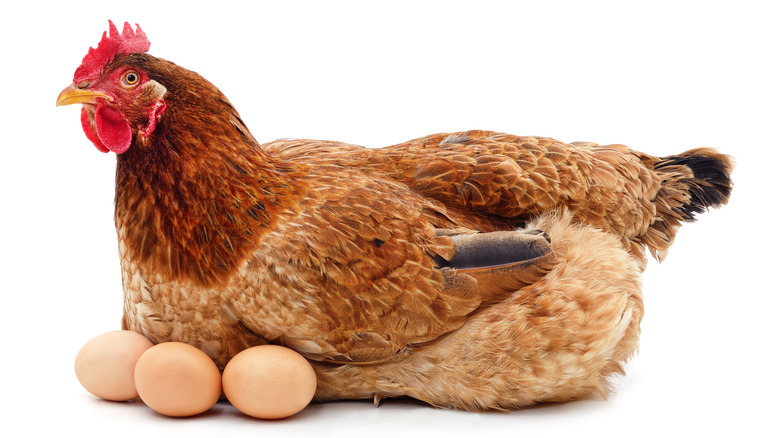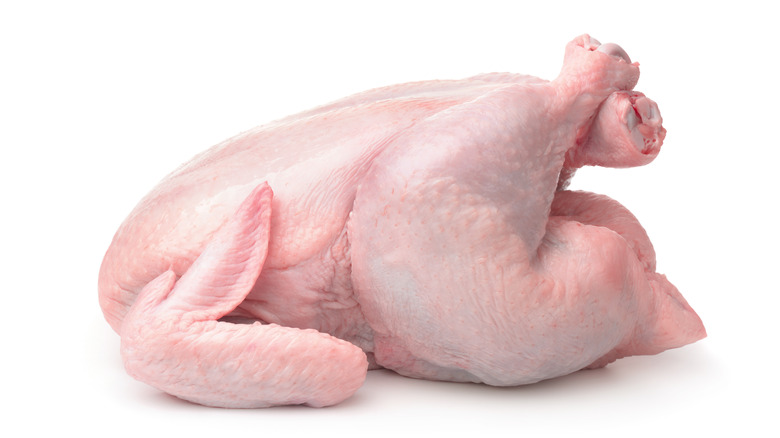Eggs Prices Are Skyrocketing But Chicken Is Falling Due To Bird Flu Outbreak
At this point, we all know that eggs have seen the greatest price increase from inflation as far as food is concerned. According to the U.S. Department of Agriculture, while a dozen eggs cost about $1.40 in October 2020 and $1.80 in October 2021, that same dozen in October 2022 cost about $3.42.
Unfortunately, egg prices only continue to increase, and not just because of inflation. Egg prices are now rising in part due to an outbreak of avian flu. According to Food Dive, because around 43.8 million birds have been affected, eggs are scarce, and we all know what that means for prices. Needless to say, over the next few months, more and more people will be rethinking what to have for breakfast.
In a strange turn of events, however, while the cost of eggs skyrockets, the cost of chicken is falling. As weird as this sounds at first, there is some good reason behind it. Let's take a look, shall we?
If eggs are more expensive, why is chicken cheaper?
With the avian flu outbreak affecting so many birds, it makes sense for egg prices to increase. However, we'd also expect the price of chicken to increase, right? But the price of chicken is actually decreasing — and for a pretty simple reason.
According to CNBC, the avian flu is mainly affecting egg-laying hens, while chickens raised for meat are largely unaffected. Part of this is due to the breeds of chickens, but it also has a lot to do with the chickens' life cycles. Egg-laying hens may reach up to 2 years of age, but the chickens we eat reach a maximum age of only 9 weeks (via Vencomatic Group). As such, a longer lifespan leaves egg-laying hens more susceptible to disease.
All that being said, chickens raised for meat have increased in quantity. Per the U.S. Consumer Price Index, the cost of chicken is up nearly 15% from October 2021, but it has also decreased by 1.09% since September 2022. Hopefully, prices will soon start to return to pre-inflation levels.

